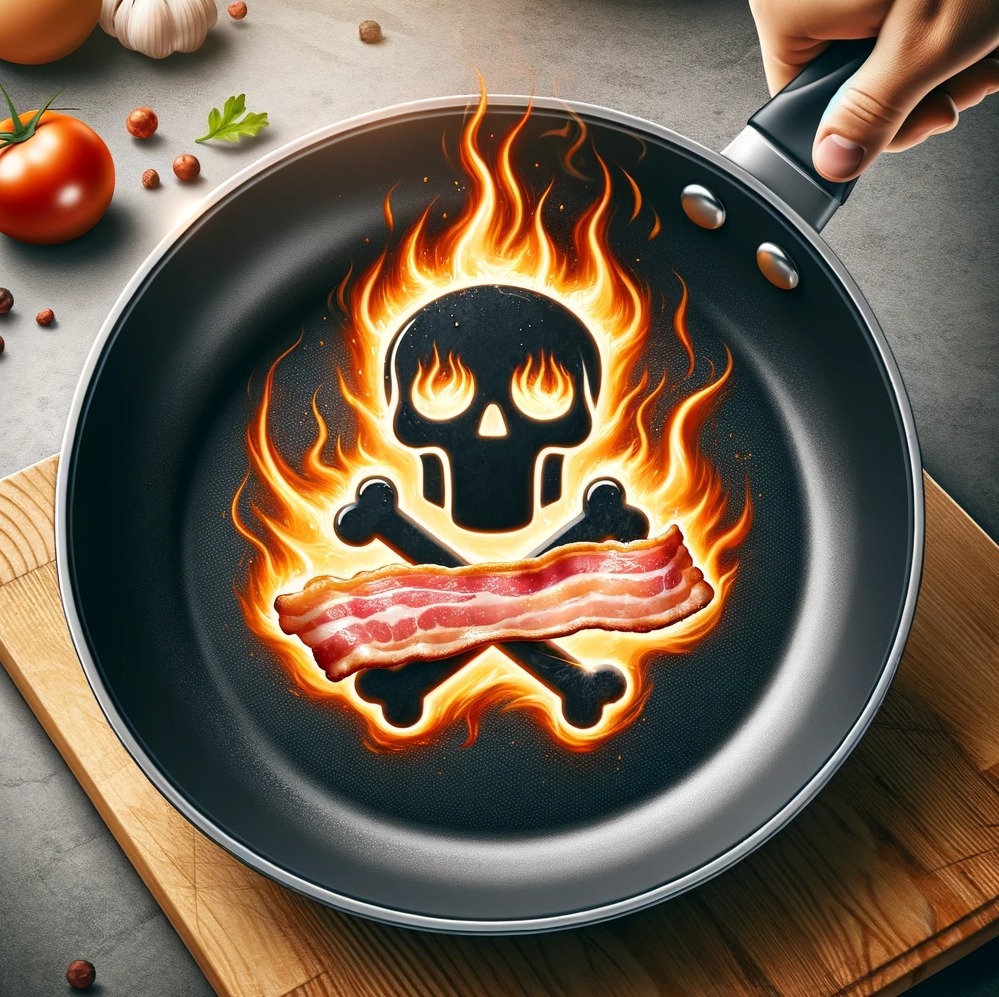Health Risks Associated with Bacon Preservative
White Paper: Health Risks Associated with Bacon Preservatives and Carcinogens…
White Paper: Health Risks Associated with Bacon Preservatives and Carcinogens
Formed at High Cooking Temperature
Abstract:
This white paper scrutinises the health concerns associated with the consumption of
bacon, focusing on chemical preservatives in bacon and the formation of carcinogenic
compounds when bacon is subjected to high cooking temperatures. It elucidates the
mechanisms through which nitrites, polycyclic aromatic hydrocarbons (PAHs), and
heterocyclic amines (HCAs) are formed and their potential impacts on human health.
1. Introduction:
Bacon enjoys immense popularity, cherished for its rich flavour and widespread appeal.
Nevertheless, the preservatives used in bacon and the compounds formed at high
cooking temperatures have prompted health concerns. This document offers an indepth exploration of these issues, underlining the necessity for awareness and potential
regulatory considerations.
2. Bacon Preservatives:
2.1. Nitrites and Nitrates:
• An overview of the use of nitrites and nitrates in bacon for preservation, colour
retention, and flavour enhancement.
• Discussion on the transformation of nitrites into nitrosamines, particularly under
high temperatures.
2.2. Health Implications:
• Examination of the evidence linking nitrosamine consumption with an increased
cancer risk, focusing particularly on gastrointestinal cancers.
• Review of research studies and regulatory stances regarding the use of nitrites in
food products.
3. Carcinogens Formed During Cooking:
3.1. Polycyclic Aromatic Hydrocarbons (PAHs):
• Explanation of PAH formation when bacon fat and juices interact with high heat,
especially during frying or grilling.
• Analysis of health risks associated with PAH exposure, emphasising their
classification as potential human carcinogens.
3.2. Heterocyclic Amines (HCAs):
• Description of HCA formation when amino acids and creatine in bacon react at
elevated temperatures.
• Discussion on the link between HCA exposure and an increased risk of cancer,
supported by animal studies and epidemiological data.
4. Recommendations and Guidelines:
4.1. Consumer Recommendations:
• Guidelines for consumers to minimise exposure to these harmful compounds,
such as cooking bacon at lower temperatures and avoiding overcooking.
4.2. Industry and Regulatory Recommendations:
• Suggestions for the meat processing industry regarding alternative preservatives
and practices to decrease the formation of hazardous compounds.
• Recommendations for regulatory authorities concerning the oversight and
restriction of preservatives use in bacon.
5. Conclusion:
This white paper accentuates significant health concerns associated with bacon
consumption, particularly focusing on nitrite roles and the genesis of PAHs and HCAs at
high cooking temperatures. It emphasises the importance of informed consumer
choices and advocates for proactive industry and regulatory measures to mitigate these
risks.
References:
1. Cross, A.J., Ferrucci, L.M., Risch, A., et al. (2010). A large prospective study of
meat consumption and colorectal cancer risk: An investigation of potential
mechanisms underlying this association. Cancer Research, 70(6), 2406-2414.
• This study provides insight into the links between meat consumption,
specifically processed meat like bacon, and colorectal cancer risk,
exploring potential mechanisms.
2. Sindelar, J.J., & Milkowski, A.L. (2012). Human safety controversies surrounding
nitrate and nitrite in the diet. Nitric Oxide, 26(4), 259-266.
• This article reviews the safety concerns and regulatory considerations
regarding nitrate and nitrite consumption, offering a balanced perspective
on their risks and benefits.
3. Turesky, R.J. (2007). Formation and biochemistry of carcinogenic heterocyclic
aromatic amines in cooked meats. Toxicology Letters, 168(3), 219-227.
Copyright 2024 – Justin Johnson, AI Health Analysis
• This paper discusses the formation of HCAs in cooked meats and their
biochemistry, providing essential context for understanding how these
compounds are created during the cooking process.
4. Knize, M.G., Salmon, C.P., Pais, P., & Felton, J.S. (1999). Food heating and the
formation of heterocyclic aromatic amine and polycyclic aromatic hydrocarbon
mutagens/carcinogens. Advances in Experimental Medicine and Biology, 459,
179-193.
• This research offers a detailed look at the formation of both HCAs and
PAHs when food, particularly meat, is heated, elucidating the processes
that lead to their creation.
5. World Health Organization. (2015). Q&A on the carcinogenicity of the
consumption of red meat and processed meat.
• This WHO publication provides authoritative answers to common
questions regarding the classification of red and processed meats as
carcinogens, reflecting the consensus of international experts.
6. Skog, K.I., Johansson, M.A.E., & Jägerstad, M.I. (1998). Carcinogenic heterocyclic
amines in model systems and cooked foods: A review on formation, occurrence,
and intake. Food and Chemical Toxicology, 36(9-10), 879-896.
Copyright AI Health Analysis – JJBB.co.uk – 2024







